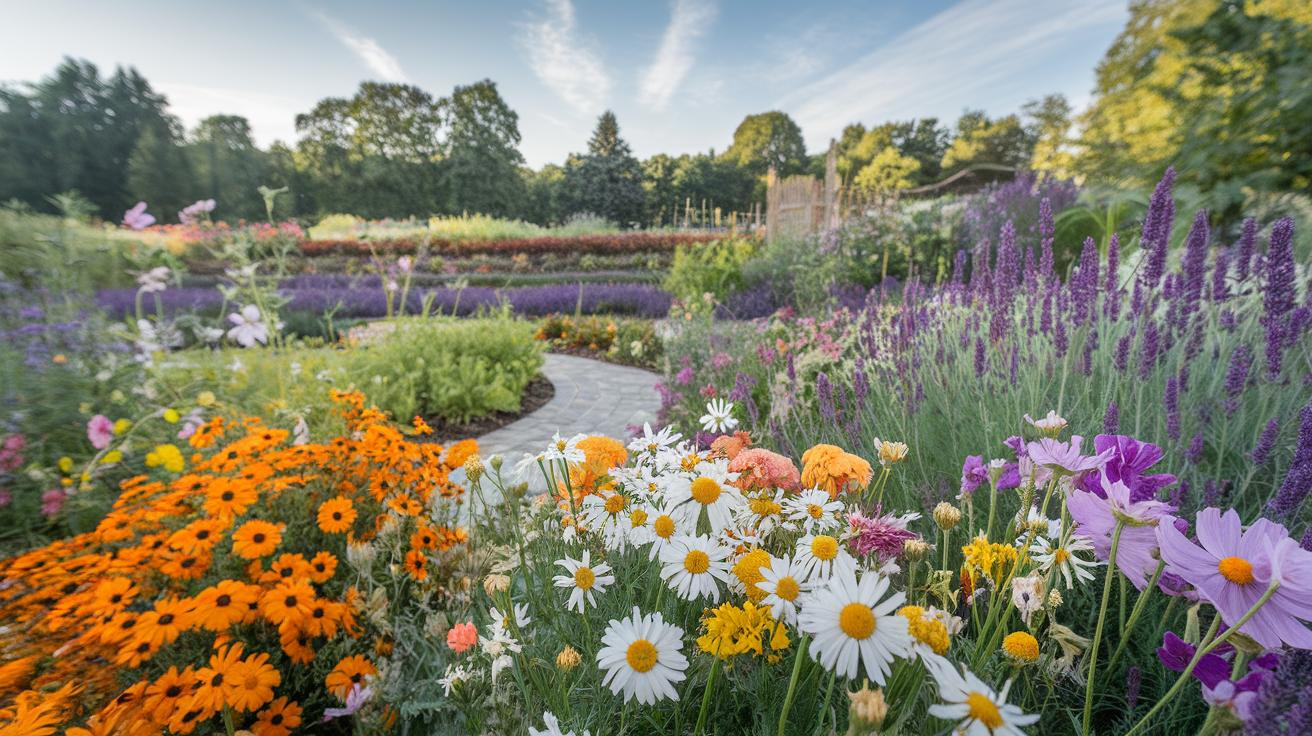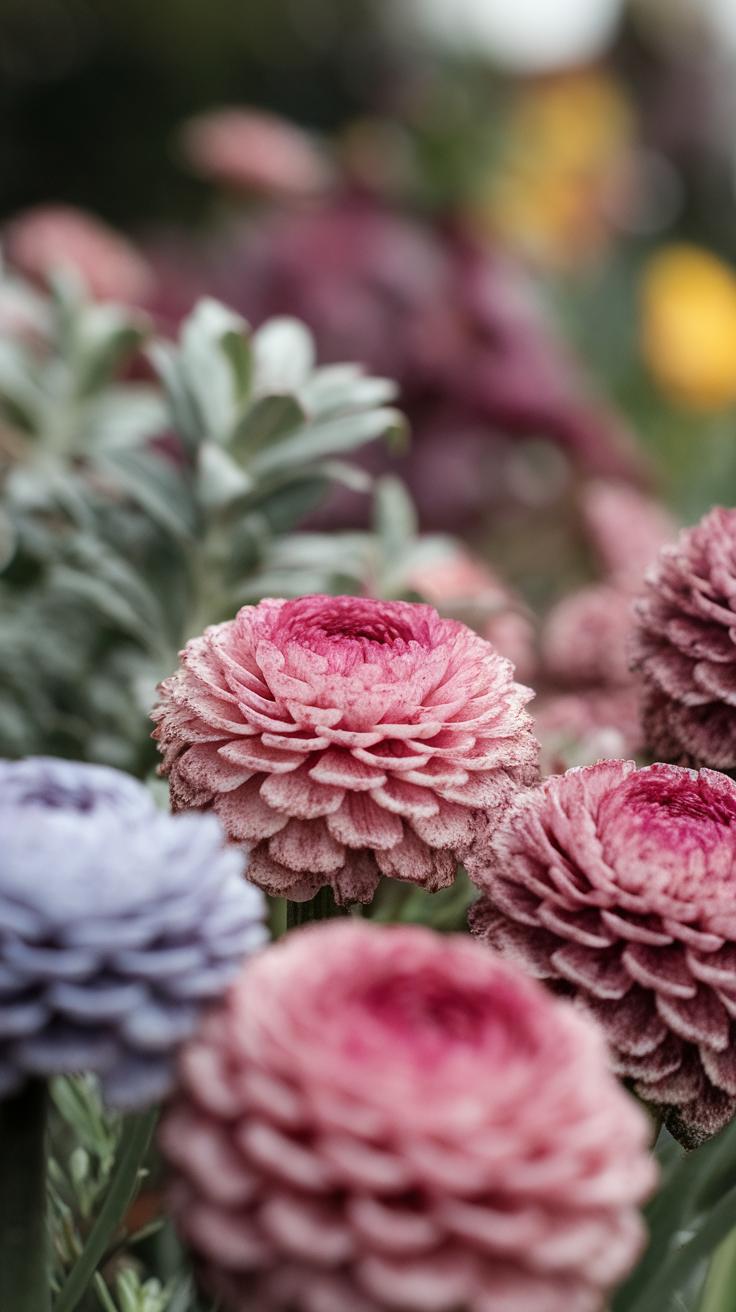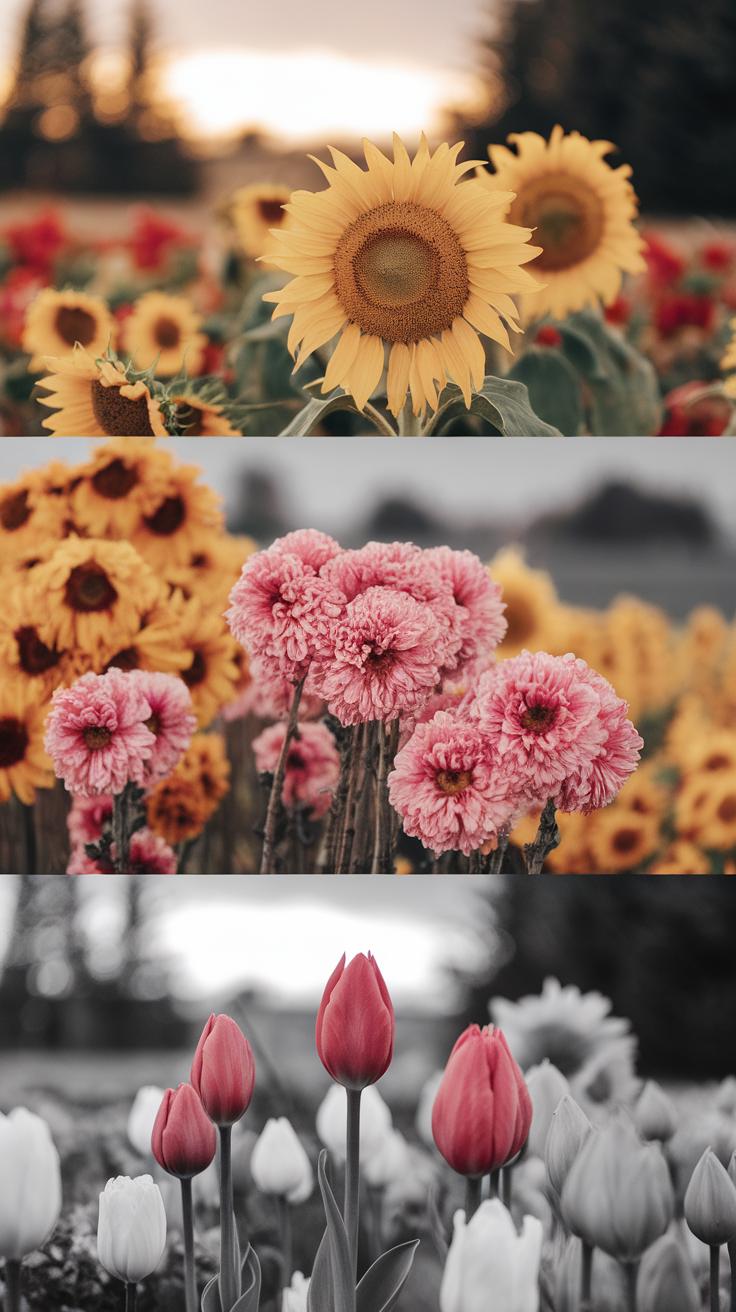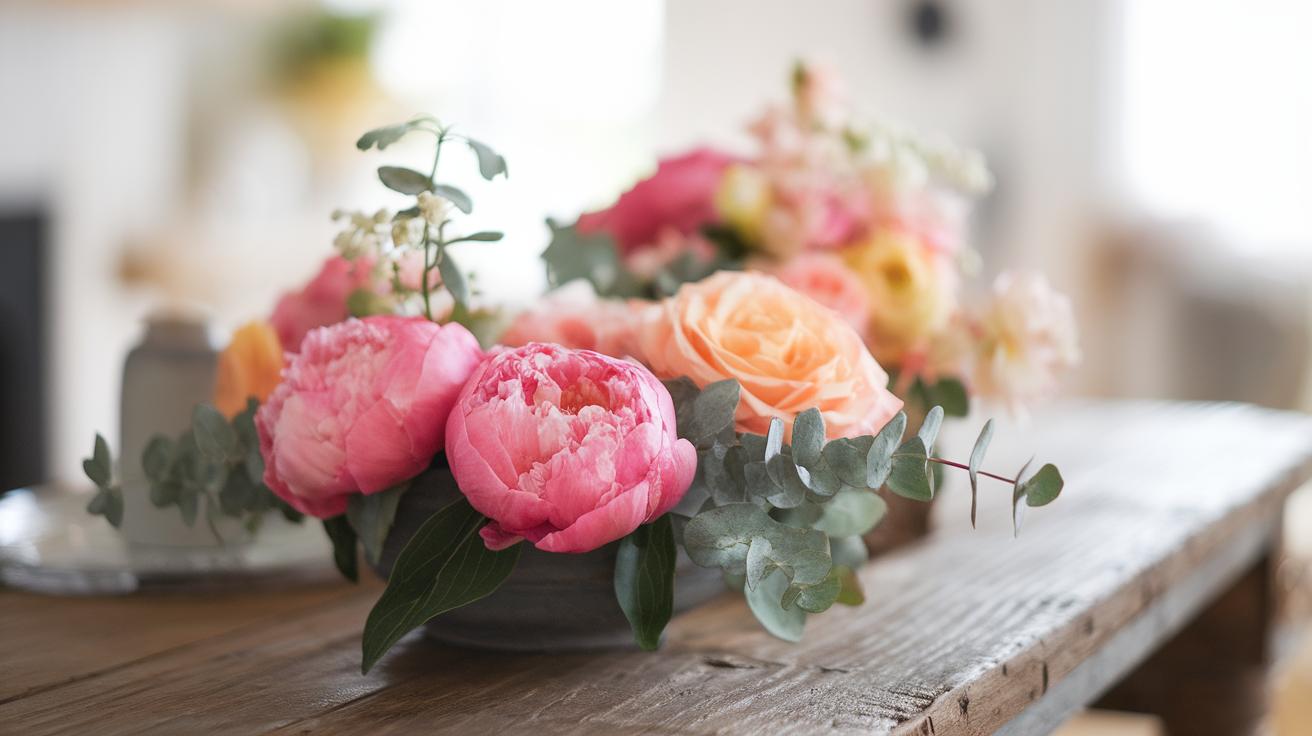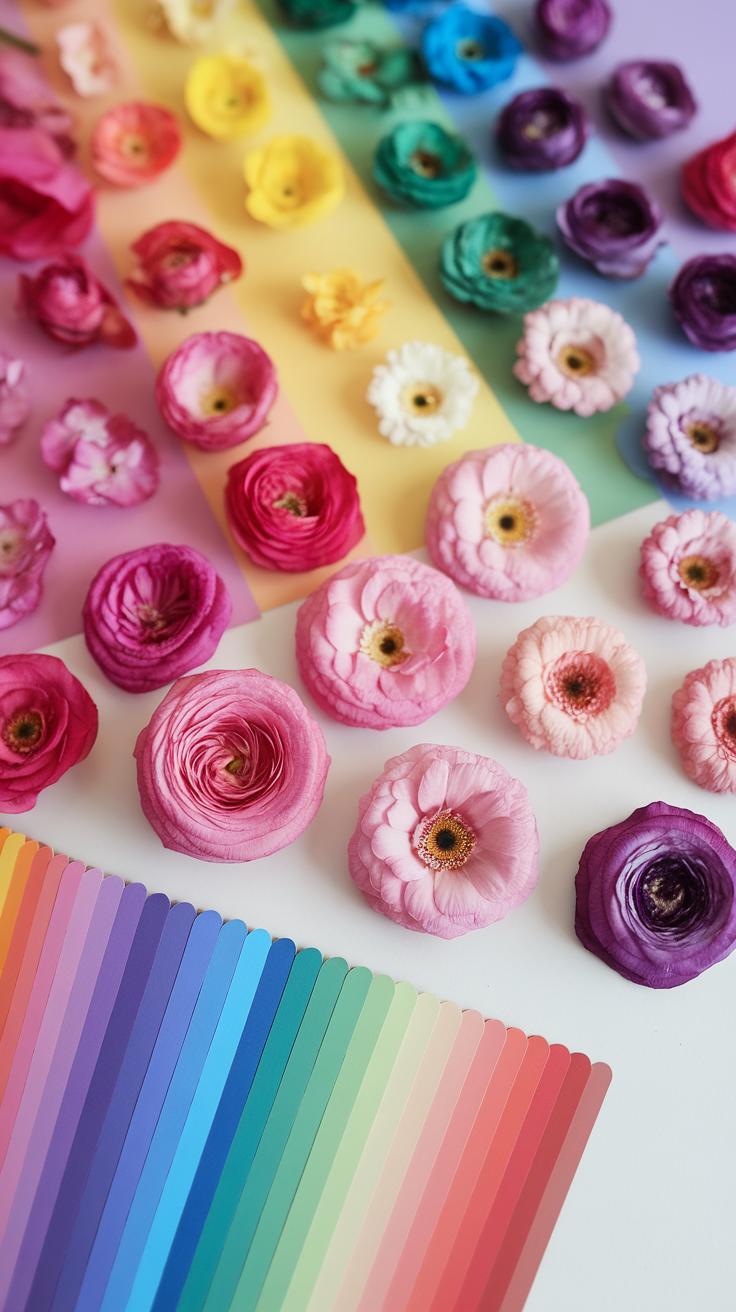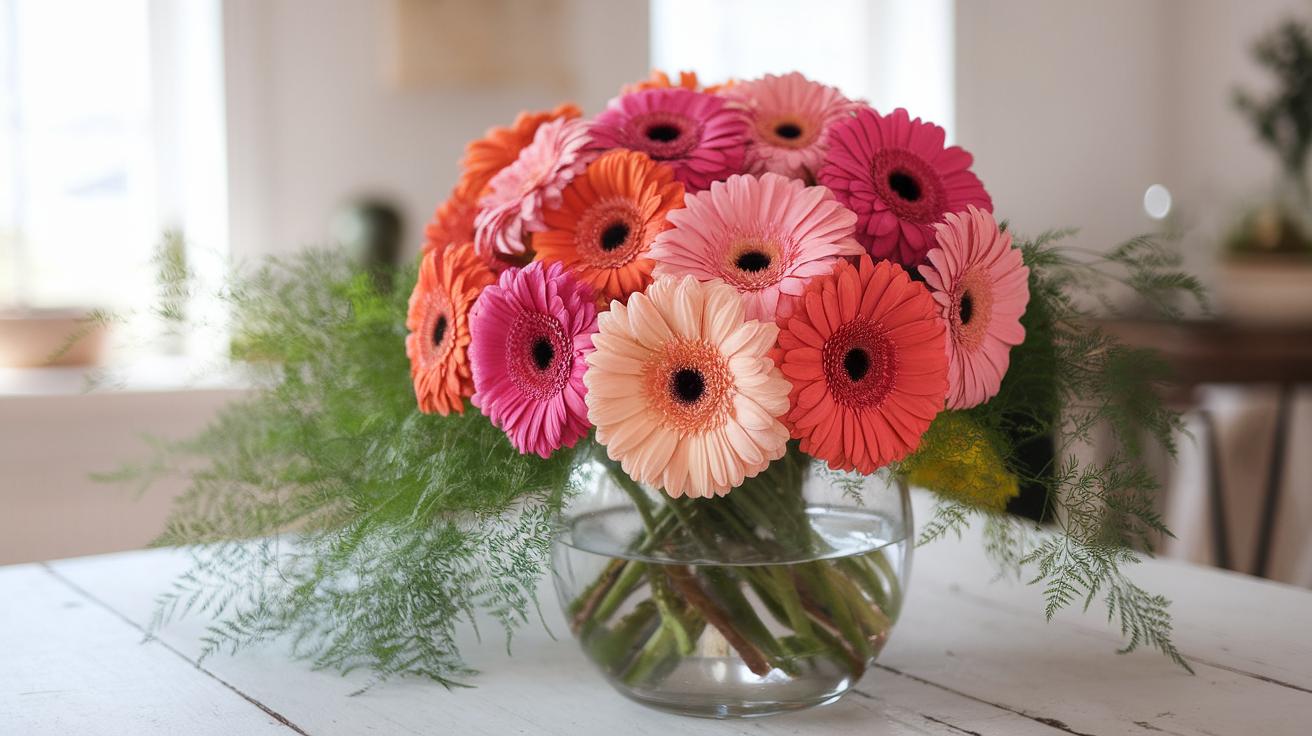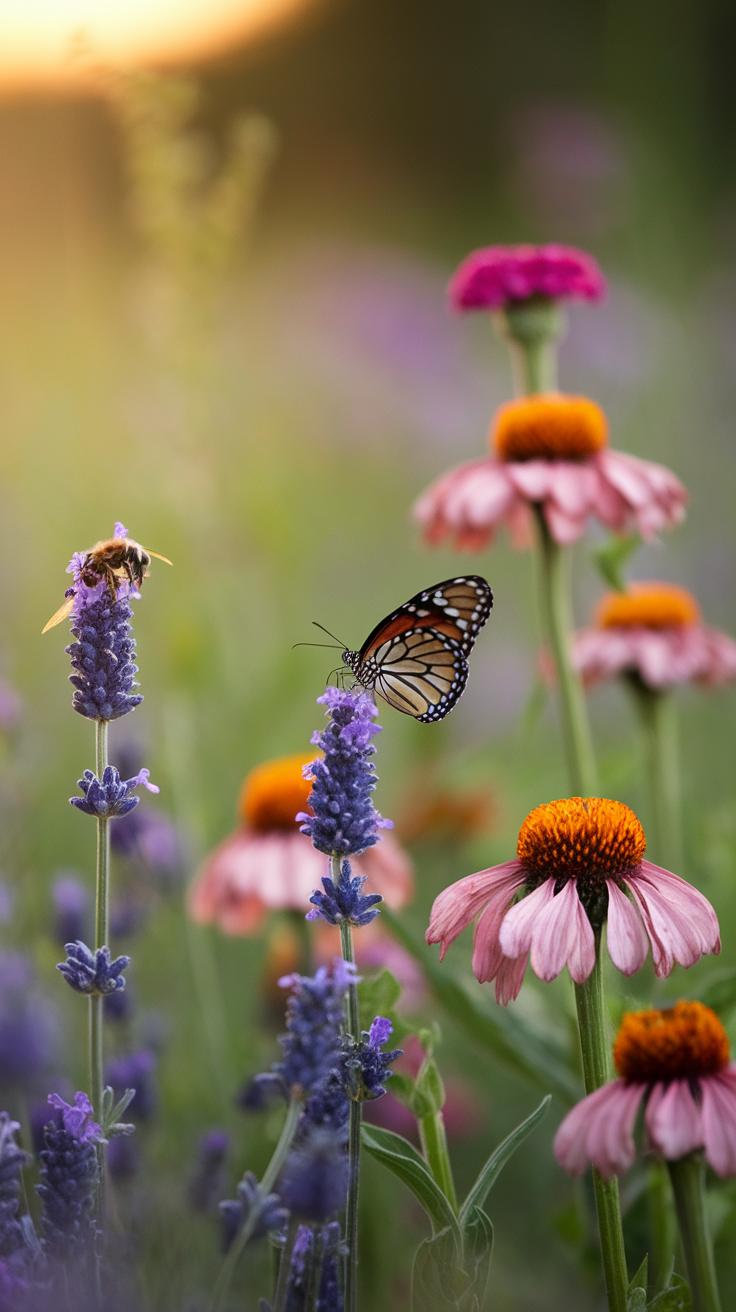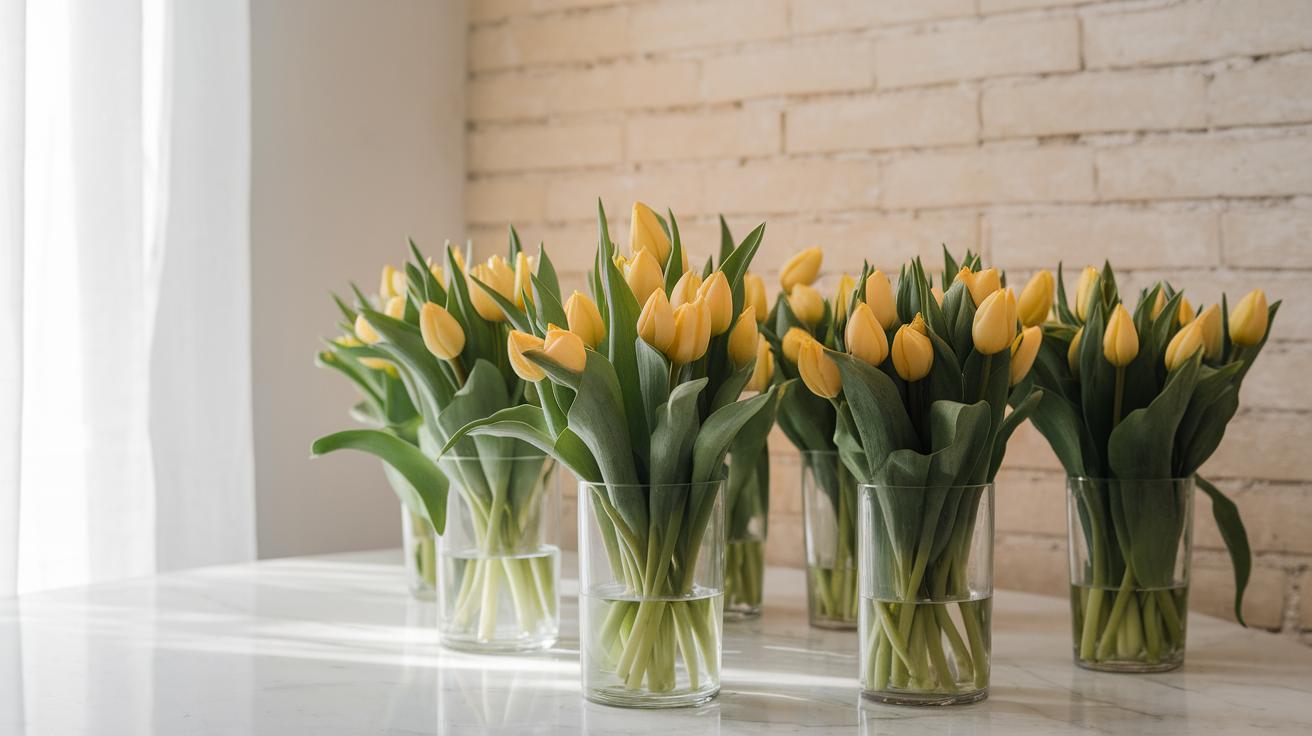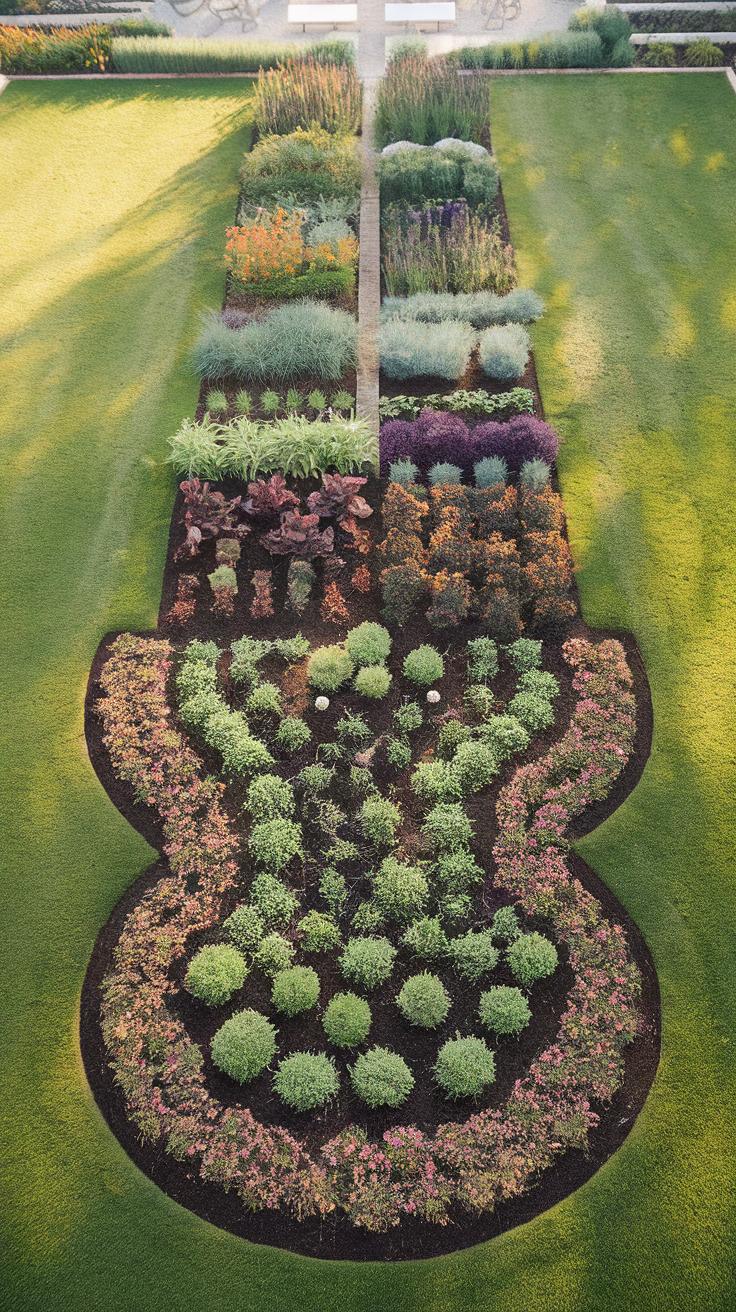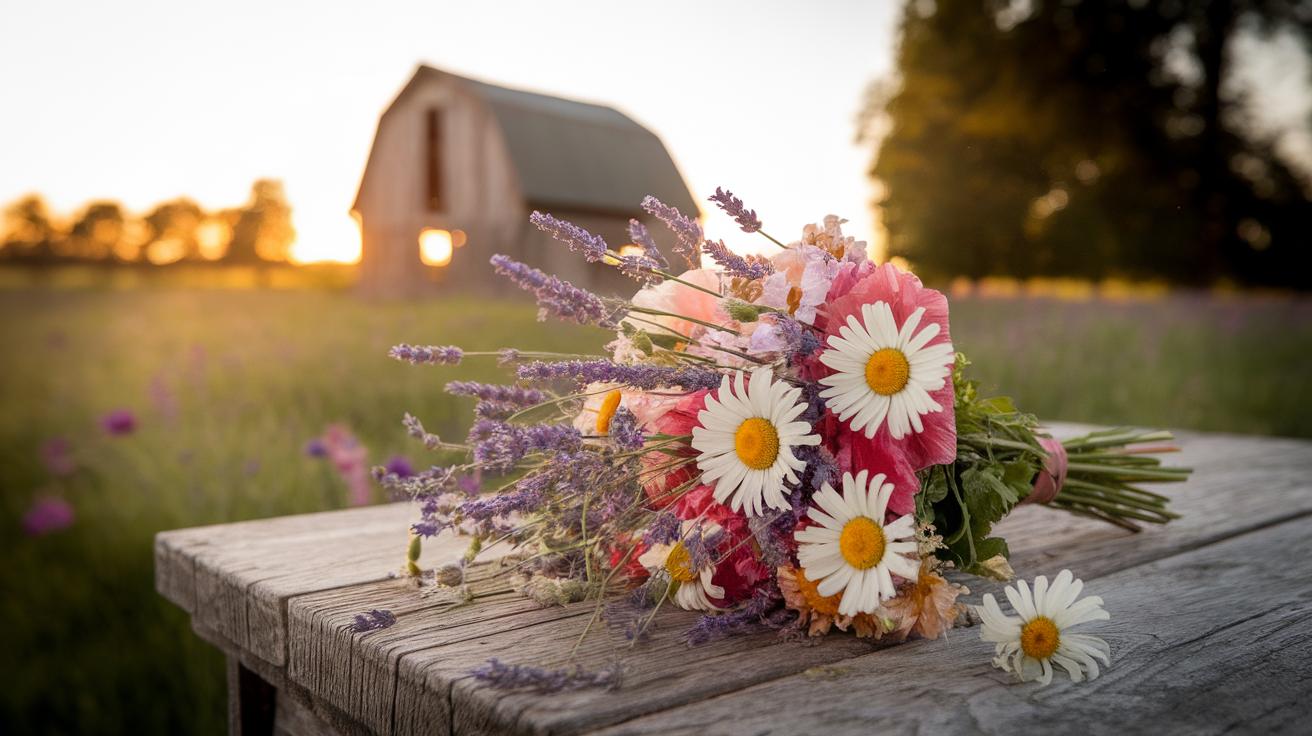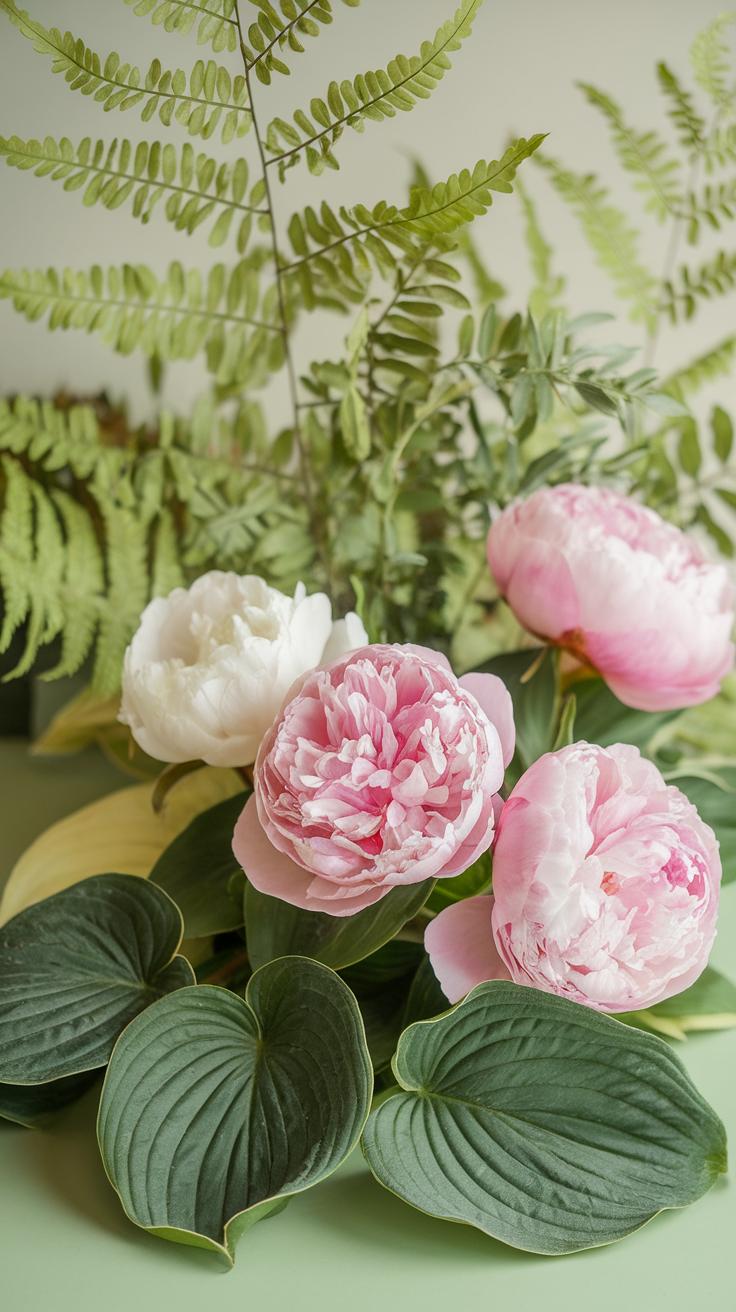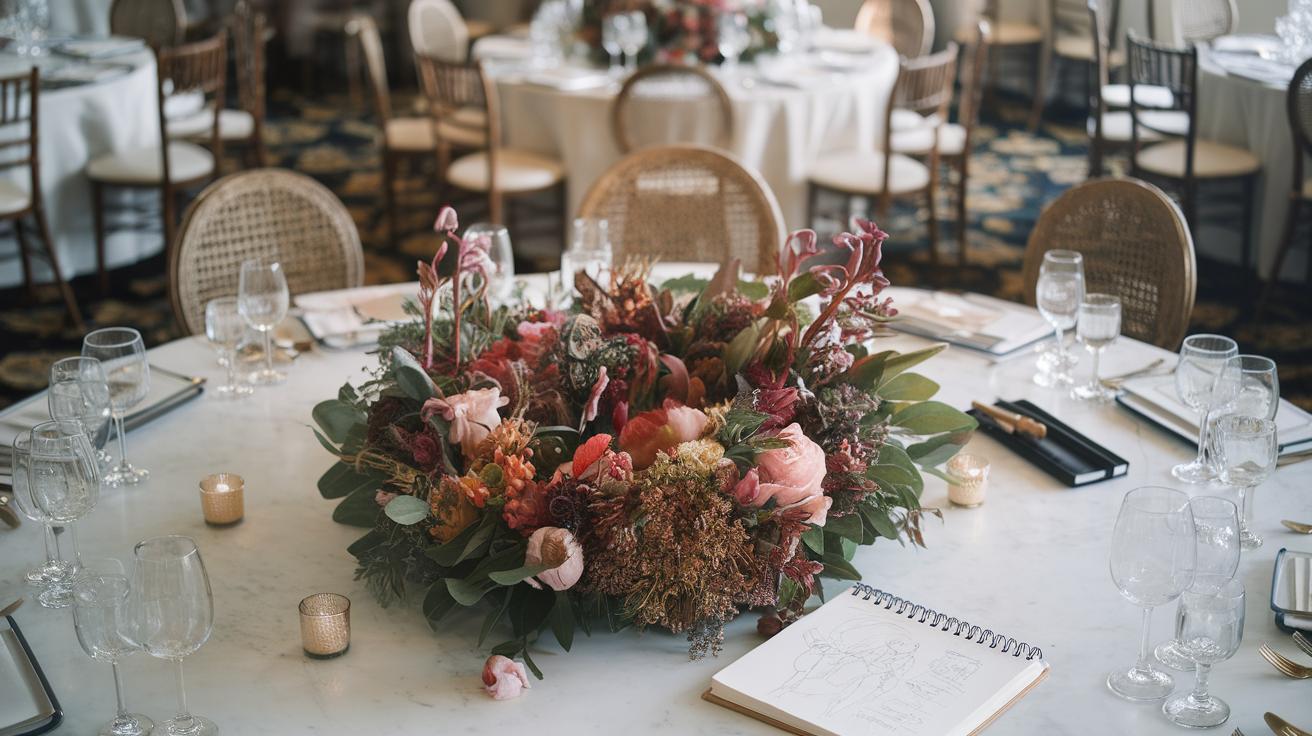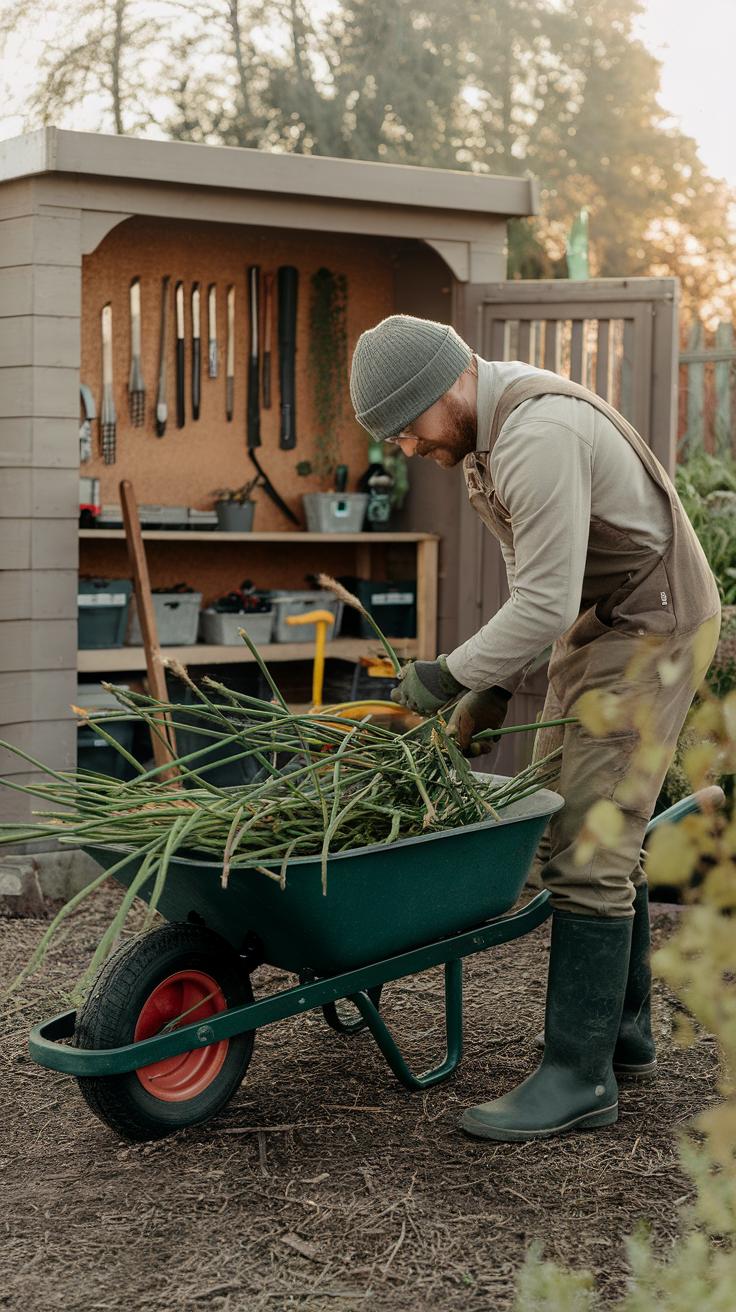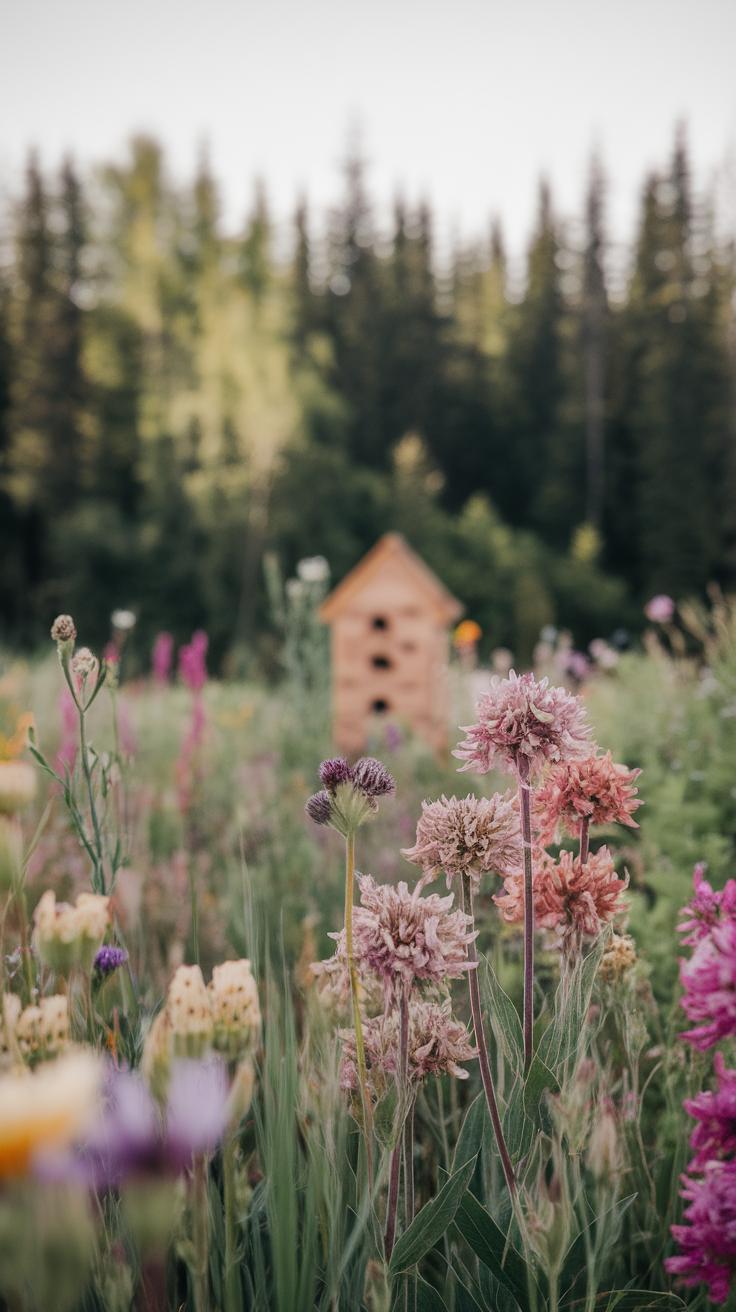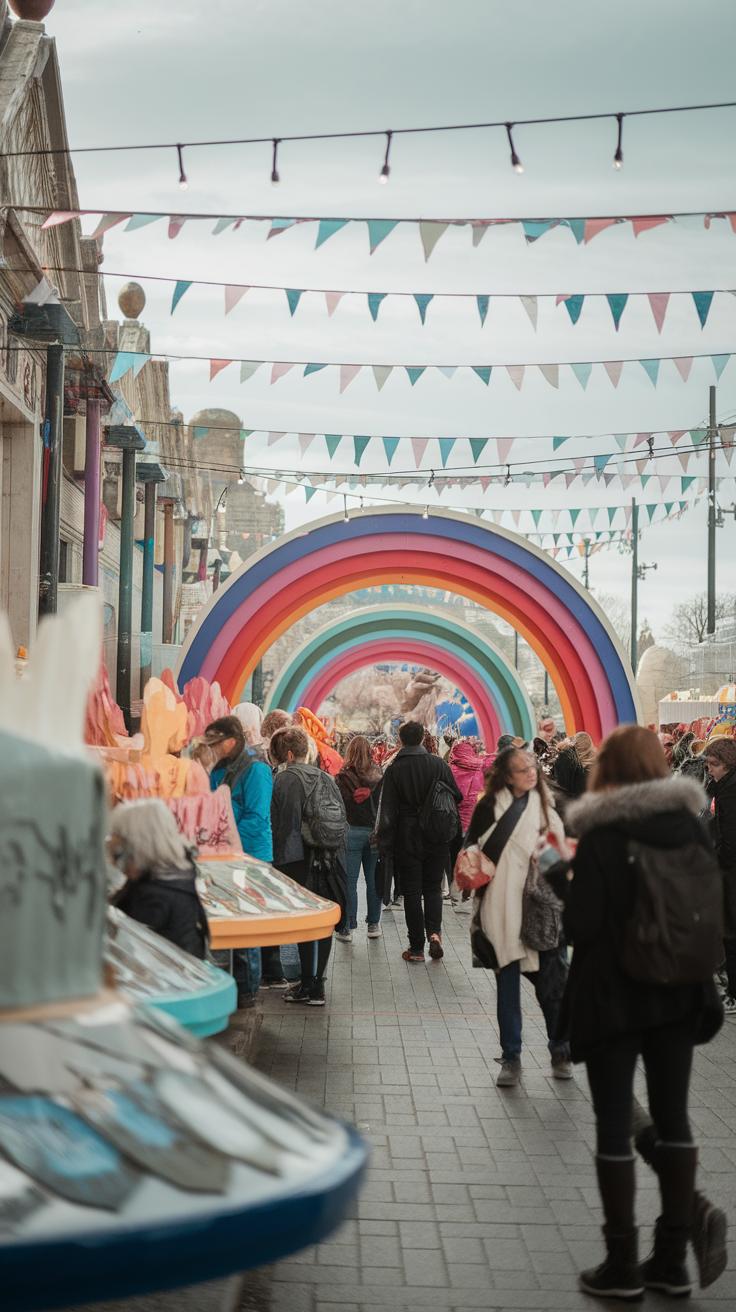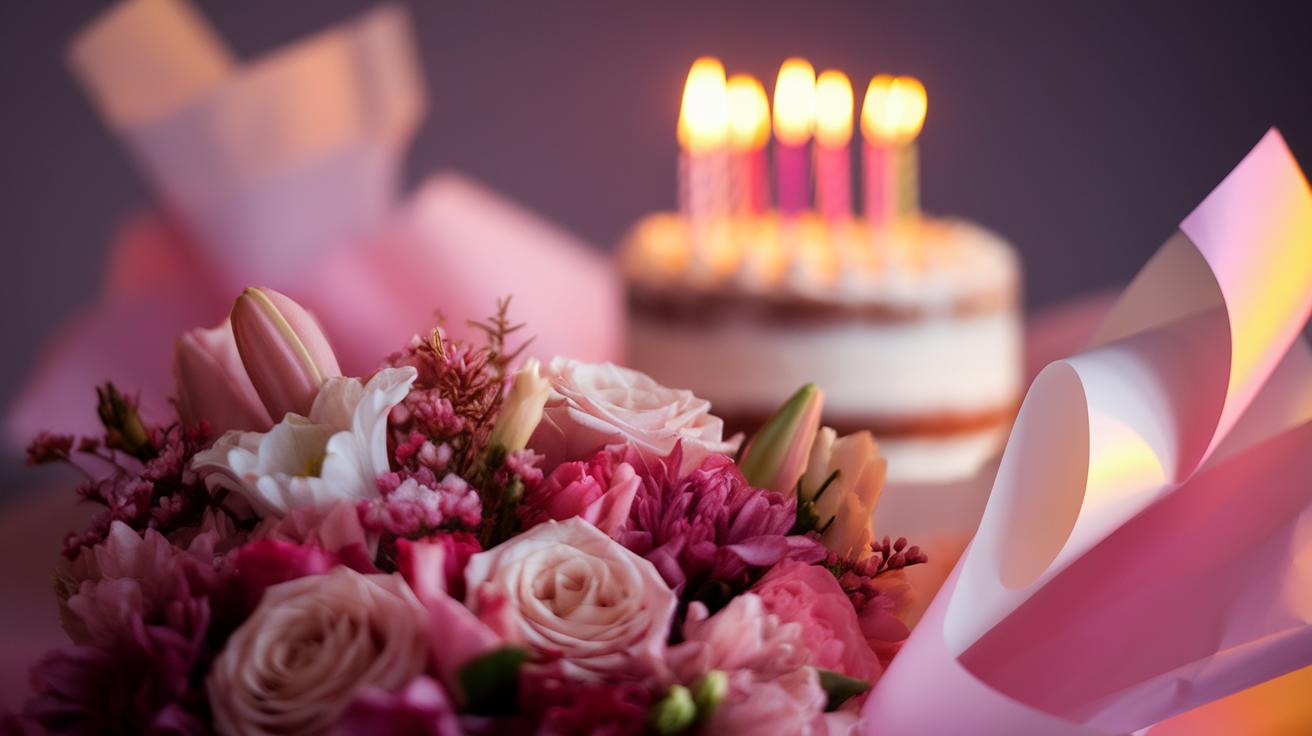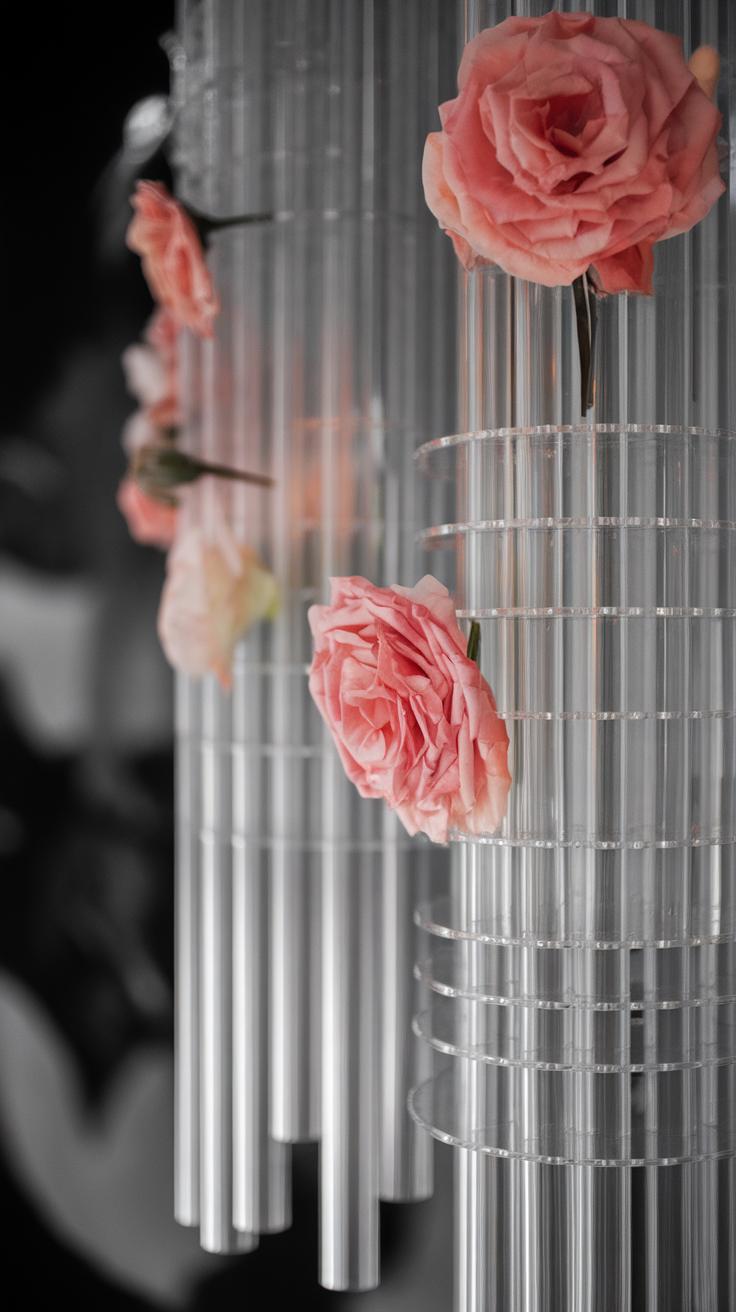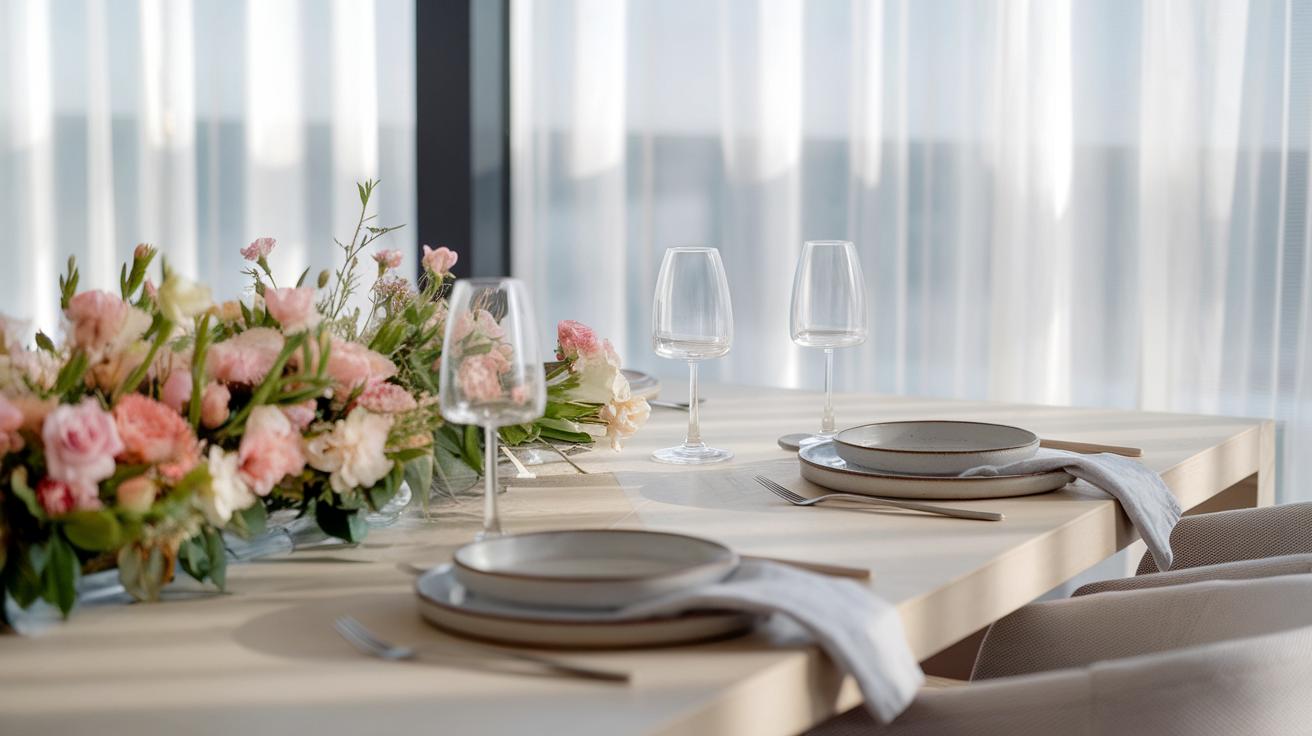Introduction
Flowers play a crucial role in garden design. They add color, texture, and fragrance to outdoor spaces. Understanding different types of flowers helps you choose the right ones for your garden. Various flowers bloom in different seasons, and selecting a range creates visual interest throughout the year.
Different flowers have unique characteristics. Some attract pollinators, while others thrive in specific soil conditions. Knowing these details allows you to design a garden that meets your aesthetic preferences and ecological goals. This article explores different flowers and their roles in unique garden designs, providing essential insights for your gardening journey.
Understanding Flower Types
Choosing the right flowers for your garden starts with understanding the types available. Annuals complete their life cycle in one growing season. They bring vibrant color and continual blooms. Marigolds and petunias are popular choices. Plant them in well-drained soil and provide full sun for best results. Perennials live for multiple years, adding beauty and reliability to your garden. They often bloom seasonally. Examples include daylilies and black-eyed Susans. These thrive in a variety of conditions, but most prefer moderate sunlight and regular watering. Biennials require two years to complete their life cycle. They grow in the first year and bloom in the second. Foxgloves and hollyhocks fall into this category. Understanding these types helps you create a garden that is both unique and thriving.
Choosing Flowers for Different Seasons
Seasonal variations greatly influence flower selection for your garden. Each season offers unique opportunities to showcase different blooms. Spring is a time of renewal and brings vibrant flowers like daffodils, tulips, and hyacinths. These flowers add early color to your garden after winter’s grayness.
Summer blooms include sunflowers, zinnias, and marigolds. These flowers thrive in warm weather and attract pollinators. Their bold colors create a lively atmosphere in your garden.
In fall, you can enjoy chrysanthemums, asters, and cosmos. These flowers bring warm tones and extend the blooming season as summer fades.
Winter presents challenges for gardening. However, you can plant winter jasmine or hellebores to maintain some color even in the cold. Which flowers would you choose to reflect the shifting seasons in your garden?
The Role of Color in Floral Design
Color plays a vital role in garden design. Different flowers create distinct atmospheres and feelings. You can choose specific colors to express your personal style or to suit the mood you want your garden to convey. For example, warm colors like red and orange can energize a space, while cool colors like blue and purple bring calmness.
Start by selecting a color palette. Consider using a monochromatic scheme with varying shades of one color for a cohesive look. Alternatively, complementary colors, such as yellow and purple, can add contrast and vibrancy. Have you ever thought about how colors interact? Placing a bright flower next to a pale one can make each bloom stand out even more.
Pay attention to seasonal color changes as well. Some flowers change shades as they bloom. For example, early spring tulips might start as pale yellow, transitioning to a vibrant orange as they mature. Use this dynamic to keep your garden interesting throughout the year.
In designing your space, think about the visual flow. Arrange colors in a way that guides the eye smoothly from one area to another. This can enhance the overall beauty of your garden and make it more enjoyable for you and your visitors.
Selecting Flowers for Pollinators
Choosing flowers that attract pollinators can transform your garden into a lively ecosystem. Pollinators such as bees, butterflies, and hummingbirds play a vital role in maintaining biodiversity. Consider incorporating plants like sunflowers, which appeal to many bee species, or milkweed, essential for monarch butterflies. These flowers provide the nutrients and habitat that pollinators need.
You might want to plant a variety of blooms that flower at different times throughout the season. This ensures that your garden remains a food source from early spring to late fall. Coneflowers and asters bloom later in the season, allowing them to attract late-flying pollinators.
Have you thought about creating a designated pollinator garden? This can be a small section filled with a mix of native plants. Native flowers typically require less care and are better for local pollinators. Use resources like local extension services to find the best options for your area.
Designing Flower Beds
Arranging for Visual Impact
Creating a flower bed requires planning. Consider the height of flowers. Place taller varieties at the back of the bed and shorter ones in the front. This arrangement ensures everyone can see them. For example, combine sunflowers with marigolds. The sunflowers rise high while marigolds fill the lower space with bright colors.
Group flowers in clusters instead of spreading them out. This technique draws the eye and creates focal points. You might place three or five of the same flower together. This repetition brings unity to the design and looks more natural. Think about using a mix of textures. Consider the smooth petals of petunias paired with the frilly edges of zinnias.
Choosing Color Schemes
Colors can set the mood of your garden. Choose a limited palette for a harmonious feel. Try using two to three complementary colors. For instance, mixing purple and yellow presents a vibrant contrast. Test different combinations to see what appeals to you.
Seasonal changes can also keep your design fresh. Plant early bloomers like crocuses alongside late-blooming asters. This ensures ongoing color throughout the season. How will you layout your flower beds for the best visual appeal? Take time to sketch your ideas. It will help illustrate your vision as you plan your dream garden.
Incorporating Foliage with Flowers
Foliage plays a key role in garden design. It enhances the beauty of flowers by adding texture and depth. Think about how the rich green leaves of hostas can frame vibrant tulips or dahlias. The contrast between the bold colors of blooms and the subtle hues of leaves can create a more dynamic visual experience.
Use different shapes and sizes of leaves to draw attention. Large, flat leaves from plants like rhubarb can balance delicate, spiky flowers like lavender. Mix in some variegated foliage, such as the striped leaves of caladium, for added interest. You can create layers that guide the eye through your garden.
What types of foliage grow well in your climate? Consider plants like ferns, which add soft, feathery textures, or evergreens, which provide structure year-round. Experiment with combinations of flowers and foliage to find what works best in your space.
Maintenance of Flowering Plants
Healthy flowering plants require regular care to thrive in your garden. Watering is one of the most vital routines. Most flowers need about an inch of water per week. You can use a rain gauge to measure your irrigation. Early mornings are the best time to water, as this helps reduce evaporation and fungal diseases.
Fertilization supports growth and blooming. Use a balanced fertilizer every four to six weeks during the growing season. This could be in granule or liquid form. For example, mixing a slow-release fertilizer into the soil at planting time can promote root development.
Pruning is also crucial. Remove dead or wilted blooms to encourage new growth. Cutting back overly tall plants helps maintain shape and health. Regular deadheading can lead to more vibrant displays. Consider your garden’s design: does it need more height, or do you want to fill in low spots? Regular care results in a flourishing, colorful garden.
Creating a PollinatorFriendly Garden
Flower Selection for Pollinators
Planting flowers that attract pollinators is key to building a thriving garden. Consider adding flowers like bee balm, lavender, and coneflower. These varieties offer nectar and pollen that bees, butterflies, and other insects love. Choose blooms in various shapes and colors. Some pollinators prefer tubular flowers, while others like flat ones. Planting in clumps helps groups of flowers stand out to pollinators. How many different types of flowers can you fit into your space?
Designing Your Garden Layout
Keep the layout simple yet effective. Arrange flowers in clusters, creating sections dedicated to specific types of blooms. This approach helps pollinators quickly find food sources. Include native plants that are well-adapted to your region, as they often provide the best support for local species. Consider adding water sources, such as shallow dishes, to enhance the environment. How can you design spaces in your garden to encourage a diverse pollinator population?
Seasonal Flower Festivals
Flower festivals celebrate the beauty and diversity of blooms around the world. These events mark seasonal changes and bring communities together to appreciate gardening traditions. Each festival showcases local and seasonal flowers, inspiring garden designs and planting ideas. You might ask yourself how these festivals can influence your own garden.
The Tulip Festival in Holland, Michigan, is one example. It combines Dutch heritage with stunning displays of tulips, attracting thousands of visitors. The festival not only promotes tourism but encourages residents to plant tulips and enhance their gardens. Is there a local flower festival you can attend to gain creative inspiration?
The cherry blossom festivals in Japan symbolize renewal and the fleeting nature of beauty. These gatherings honor cultural traditions while showcasing the blossoms’ stunning visual impact. You can incorporate similar themes of impermanence in your garden design. How might you use seasonal blooms to create a space that invites reflection?
Innovative Floral Design Techniques
Modern Trends in Flower Arranging
Today, flower arranging combines creativity with practicality. You can create stunning displays by mixing various types, colors, and shapes of flowers. Consider using local blooms to reduce costs and support your community. For example, sunflowers paired with dahlias create a lively contrast. Think about the texture, too. Adding foliage can enhance your arrangements.
Your Garden Design Approach
Use innovative layouts to redefine your garden space. Vertical gardens, where flowers grow up walls or on trellises, maximize limited areas. Incorporate raised beds to elevate your plants and offer a fresh perspective. Choose flowers that attract pollinators, such as lavender and echinacea. This not only beautifies your garden but also supports local ecosystems. How might these techniques transform your outdoor space?
Conclusions
The beauty of a garden often starts with its flowers. By considering different types, you can create a vibrant space that reflects your style. Selection based on bloom times and pollinator attraction ensures a lively garden throughout the year.
Ultimately, a garden full of diverse flowers enhances not only its appearance but also supports local wildlife. Make thoughtful choices about the flowers you plant. Your garden can become a unique haven, blooming with beauty and life.

